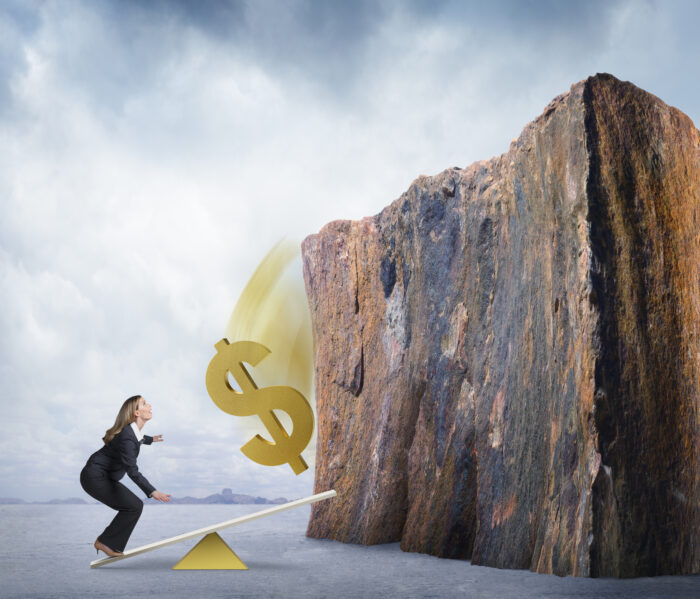What is Leverage

iStock photo Getty Images
What Does Leverage Mean?
How is that for a catchy title?
I chose to write about leverage this month because I have been deep into the downfall of FTX. It is a story with twists and turns emerging every day.
Although we won’t know the specific details about the collapse for a long time (years) one of the reasons for the collapse is that FTX owed $8 billion dollars to investors and creditors.
How did FTX, once valued at $32 billion end up with a negative $8 billion valuation?
In one of the statements by ex-CEO Sam Bankman-Fried, he said he didn’t know how levered FTX was. He also said he did not realize how levered investors using the FTX trading platform were.
That is what happens when you have no reliable accounting practices. Or no accounting at all.
Leverage works like a magnifying glass.
What leverage does in the financial markets is magnify risk and reward.
The rewards of leverage can make you wealthy. The risk of leverage can make you poor. And it can happen very, very quickly.
So how does leverage work?
I am an investor with an asset. The asset could be stocks, bonds, gold, crypto or something else.
I deposit my asset onto a “trading platform” that will allow me to buy and sell my asset.
The trading platform offers to lend me money based on the value of my asset.
Assume my asset is worth $100.00. If I can borrow $1,000.00 and buy more of the same asset, my returns will be ten times greater. [1]
The price of my asset is going to go up. When it does, I will be able to pay off the $1000.00 I have borrowed and still have a hefty profit.
In this example I am ten times leveraged. I have taken a risk borrowing money, but I see big rewards on the horizon.
Then the unthinkable happens. The value of my asset begins to fall. It falls from $100.00 to $10.00.
The total value of my asset has dropped to $100.00 but I still owe $1,000.00. [2]
I don’t have $1,000.00 to pay back the loan. My asset sells for $100.00, and I still owe $900.00.
I have defaulted on a loan.
The housing market crisis is an example of a leveraging debacle.
Lenders, who were not part of the regulated banking system made loans to individuals who had no means to pay off the loans. Ever. Why did these phony lenders hand out money? Because they believed housing prices would only go up. So what if someone defaulted on their loan?
They would just sell the home at a higher price.
It was so easy to borrow money, I knew people who had little money or savings but owned 3 or 4 homes believing that prices would continue to go up.
When someone’s income is $30-$50 thousand a year and that someone has $1 million is mortgage debt, that ratio of income to debt is leverage.
What followed was the Great Recession. Too many people “leveraged up” and lost it all.
In the financial markets there is always leverage. Borrowing and lending is a tool for risk management. Leverage shows up in financial statements, accounting statements and portfolio management. Leverage is not inherently a terrible thing.
How a company or an individual uses leverage is where things can go wrong.
In the case of FTX I found it interesting that leveraging your account ten times was an option you could add to your shopping cart when you deposited Bitcoin or Ethereum.
“Thank you for opening an account with us. Would you like to leverage your investment ten times? Twenty times? Click the box to the right to accept”
So easy and so fatal.
[1] Ten times $100.00 equals $1,000.00 (10 X 100 = 1,000)
[2] Ten times $10.00 equals $100.00. (10 x 10 = 100 )
This website is for informational purposes only and does not constitute an offer to sell, a solicitation to buy, or a recommendation for any security, nor does it constitute an offer to provide investment advisory or other services by The Modest Economist LLC.
